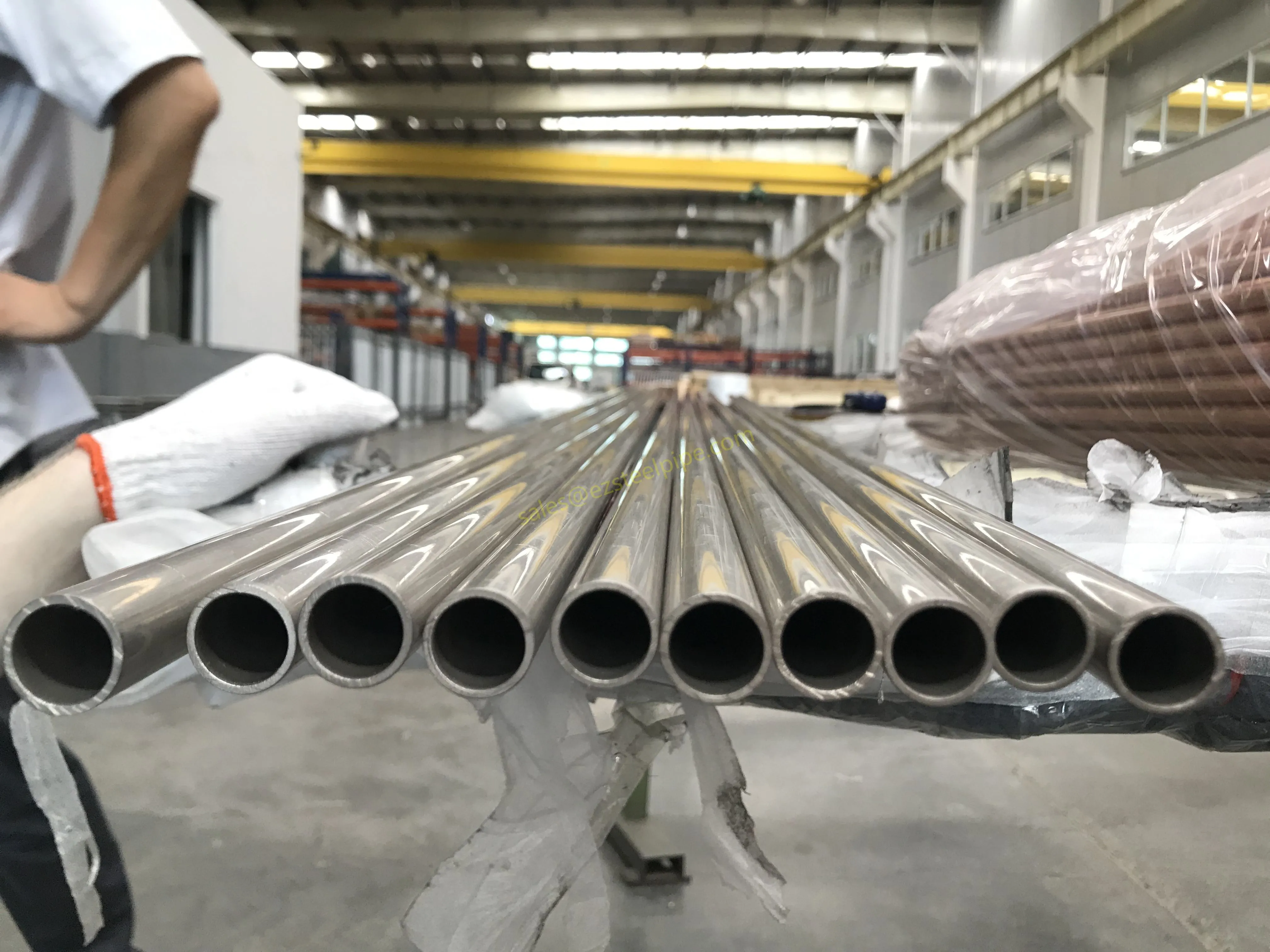 export@ezsteelpipe.com
export@ezsteelpipe.com +86 731 8870 6116
+86 731 8870 6116
This standard applies to seamless copper alloy tubes (e.g., brass, copper-nickel alloys) for heat exchangers and condensers in industrial applications, including power plants, petrochemical, and marine industries.


This standard applies to seamless copper alloy tubes (e.g., brass, copper-nickel alloys) for heat exchangers and condensers in industrial applications, including power plants, petrochemical, and marine industries.
References other standards such as:
- GB/T 228 (tensile testing)
- GB/T 5121 (chemical analysis of copper alloys)
- GB/T 5248 (non-destructive testing for copper tubes)
Buyers should specify the following when ordering:
l Standard number (GB/T 8890)
l Material code/alloy designation (e.g., HSn70-1, BFe10-1-1)
l Dimensions (outer diameter, wall thickness, length)
l Surface condition (bare, coated, etc.)
l Testing requirements (e.g., hydrostatic, eddy current, or ultrasonic testing)
l Special requirements (if any)
Common alloys covered:
- HSn70-1 (Tin brass)
- BFe10-1-1 (Copper-nickel alloy)
- BFe30-1-1 (Cu-Ni-Fe alloy)
- Others (e.g., HAl77-2, H68A)
Chemical composition limits for each alloy are specified (e.g., Cu, Ni, Fe, Sn, Zn percentages).
- Production method: Seamless, cold-drawn or hot-extruded.
- Dimensional tolerances: Outer diameter (±0.10–0.50 mm), wall thickness (±5–10% of nominal thickness).
- Length: Fixed or random lengths, typically 1–7 meters.
- Tensile strength, yield strength, and elongation requirements vary by alloy (e.g., HSn70-1: tensile strength ≥295 MPa).
- Hardness (optional, per agreement).
- Chemical analysis: Per GB/T 5121.
- Mechanical tests: Tensile testing (GB/T 228).
- Hydrostatic pressure test (optional, per customer request).
- Non-destructive testing (NDT): Eddy current (GB/T 5248) or ultrasonic testing.
- Surface quality: Visual inspection for defects (cracks, scratches, etc.).
- Dimensional inspection: Verify OD, wall thickness, and straightness.
- Tubes must be free from cracks, inclusions, and severe scratches.
- Minor surface imperfections allowed if within dimensional tolerances.
- Marking: Includes manufacturer’s name, alloy grade, dimensions, batch number, and standard number (GB/T 8890).
- Packaging: Bundled with protective coatings to prevent corrosion during transit.
Manufacturers must provide a test certificate including:
- Chemical composition,
- Mechanical test results,
- NDT reports (if applicable),
- Compliance statement with GB/T 8890.
The GB/T 8890 standard covers several copper alloy material codes used for seamless heat exchanger and condenser tubes. Below is a list of the primary material codes (alloy designations) specified in the latest version of the standard (as of current updates):
- H68A – Copper-zinc alloy (68% Cu, rest Zn)
- HSn70-1 – Tin brass (70% Cu, ~1% Sn, rest Zn)
- HAI77-2 – Aluminum brass (77% Cu, ~2% Al, rest Zn)
- BFe10-1-1 – 90% Cu, 10% Ni, ~1% Fe, ~1% Mn
- BFe30-1-1 – 66% Cu, 30% Ni, ~1% Fe, ~1% Mn
(May include additional grades depending on the latest revision)
- Chemical composition limits (e.g., Cu%, Ni%, Fe%, Sn%) are specified for each alloy.
- Mechanical properties (tensile strength, yield strength, elongation) vary by material code.
- Application suitability depends on corrosion resistance (e.g., seawater, steam, chemical environments).
Want to order the same ? Contact us Now to send your request!

 Related Products
Related Products